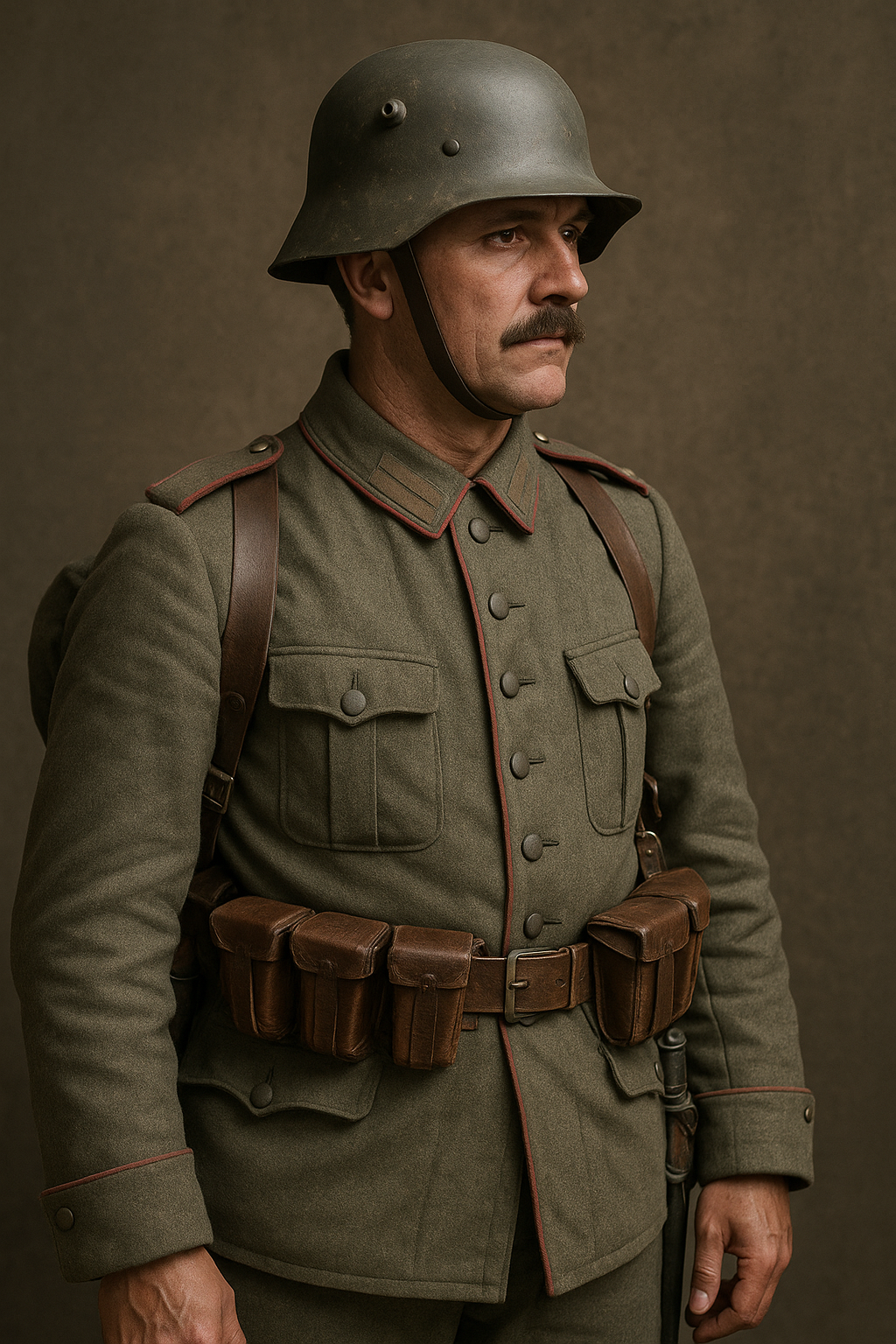
German WW1 Uniforms: A Detailed Guide for History Buffs and Reenactors
Published on Sep 20, 2025
🇩🇪 German WW1 Uniforms: A Detailed Guide for History Buffs and Reenactors
Did you know? Over 13 million German soldiers wore variations of the German WW1 uniform during the Great War — each piece telling a story of innovation, identity, and survival.
Whether you're a reenactor, a collector, or fascinated by WW1 military history, the German WW1 uniform remains one of the most iconic and sought-after relics of the 20th century. In this in-depth guide, we’ll break down its features, how to recreate one, and what to avoid along the way.
🧠 What Makes German WW1 Uniforms So Fascinating?
The WW1 German uniform wasn’t just clothing — it was a symbol of military innovation and national pride. Unlike the flamboyant pre-war styles, WW1 saw a shift to functionality and camouflage.
Key Characteristics:
- Field Grey (Feldgrau): The signature dull green/grey color designed for concealment.
- Pickelhaube Helmet: Iconic spiked helmet (early war), later replaced by the Stahlhelm for better protection.
- M1910 Tunic: Standard issue tunic with red piping (until phased out).
- Puttees and Jackboots: Leg wrappings and tall leather boots completed the uniform.
- Rank & Unit Insignia: Epaulettes, cuffs, and collar tabs identified regiments.
🛠️ How to Make a WW1 German Uniform (Step-by-Step for Beginners)
One of the top queries we see is: "How to make a WW1 German uniform?" Whether for reenactment or display, here's your starter roadmap:
1. Start with the Base Layer
- Undergarments: Wool shirt & long underwear.
- Trousers: M1907/10 wool trousers or reproductions.
2. Acquire the M1910 or M1915 Tunic
- Opt for authentic reproductions (Schipperfabrik, Hessen Antique).
- Check for correct red piping and wool quality.
3. Get the Footwear Right
- Jackboots (Marschstiefel): Essential for infantry portrayal.
- Or use low boots with Puttees for late-war impression.
4. Choose the Correct Headgear
- Pickelhaube for 1914-1916 impression.
- Stahlhelm M1916 for mid-to-late war portrayals.
5. Add the Gear
- Leather equipment belt with suspenders.
- Ammo pouches, canteen, breadbag, gas mask canister, and shovel.
⚠️ Common Pitfalls When Recreating German WW1 Uniforms
Even experienced enthusiasts stumble here. Avoid these common mistakes:
❌ Mixing Eras:
Don’t mix early-war tunics with late-war helmets. Always research the year and unit you're representing.
❌ Poor Reproduction Quality:
Cheap wool, wrong buttons, and incorrect stitching are dead giveaways.
❌ Wrong Insignia:
Many units had unique insignia—cross-reference photos, military archives, or reputable uniform guides before purchasing or sewing.
❌ Incorrect Fit:
German uniforms were tailored — baggy or ill-fitting repros look wrong and feel uncomfortable.
🔥 Current Trends in German WW1 Uniform Collecting & Reenactment
There’s been a resurgence in living history events, and the demand for authentic German WW1 uniforms is growing fast.
🔄 Modern Trends Include:
- 3D-Printed Reproductions of hard-to-find items (like Pickelhaube plates).
- Virtual Reenactments & YouTube Content Creation.
- Historical Accuracy Challenges among reenactors on TikTok and Instagram.
- Restoration of Original Uniforms with museum-grade materials.
📈 Commercial Opportunities:
- Vintage auctions and estate sales.
- Custom reproduction businesses.
- Renting full uniforms for film or museum displays.
📚 Recommended Resources for Authenticity
- Books:
- The German Army in World War I (1): 1914–15 by Nigel Thomas
- World War I Uniforms by Laurent Mirouze
- Websites:
- Der Erste Weltkrieg
- Hessen Antique
- Forums:
- Great War Forum
- WW1 Reenactors Facebook Groups
🎯 German WW1 Uniforms in Reenactments: Making it Real
Want to stand out in your next WW1 reenactment?
✅ Do:
- Research your chosen unit (e.g., 1st Bavarian Infantry).
- Invest in a good-quality tunic and boots.
- Practice soldier drills and period-correct behavior.
🚫 Don’t:
- Modern accessories (e.g., glasses, watches).
- Visible tattoos or piercings.
- Plastic canteens or props.
🏁 Conclusion: Step into History with German WW1 Uniforms
The German WW1 uniform is more than fabric and buttons — it's a tangible connection to a defining era of world history. Whether you're collecting, reenacting, or learning, understanding its parts, purpose, and pitfalls is key to authenticity.
